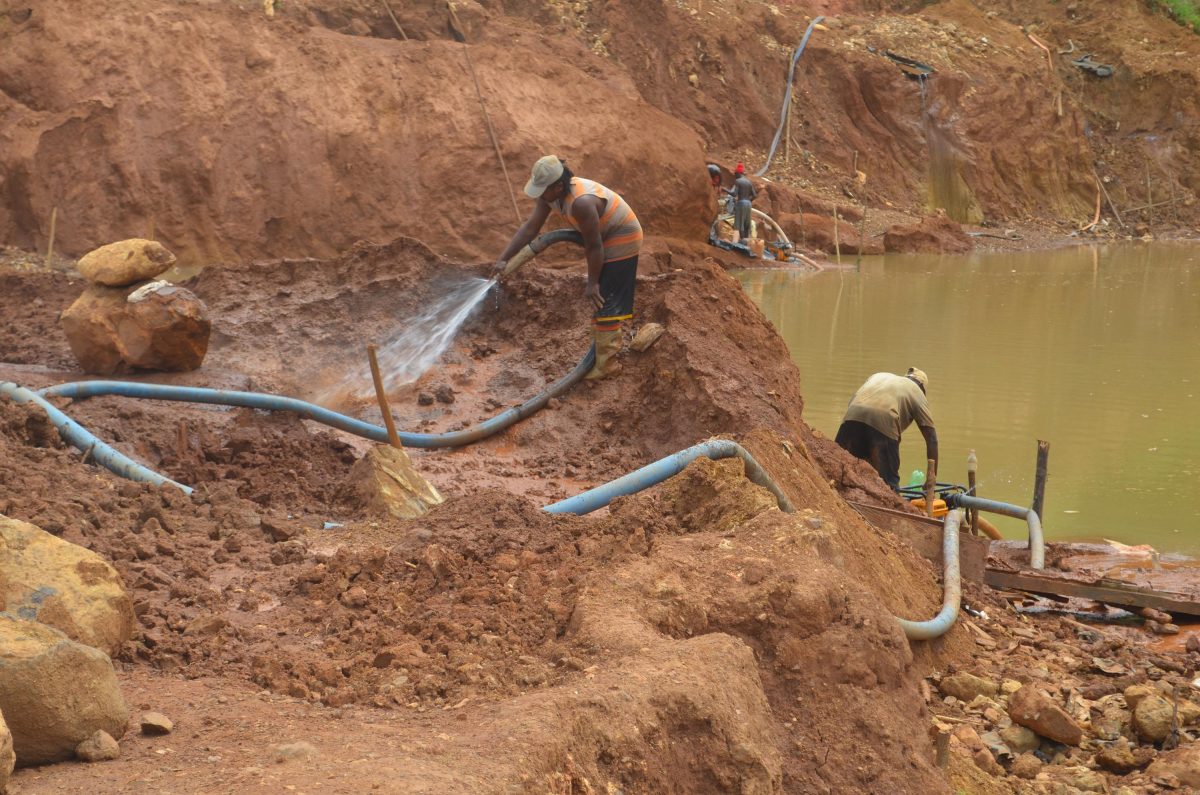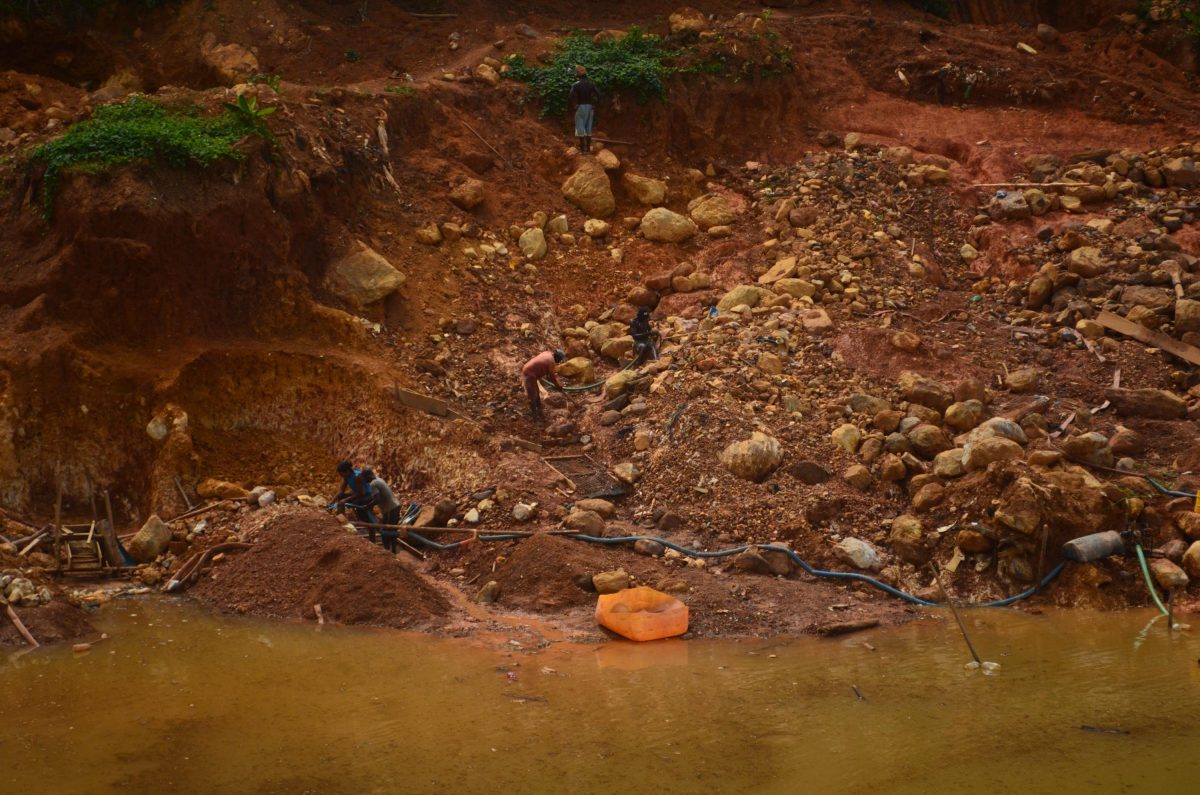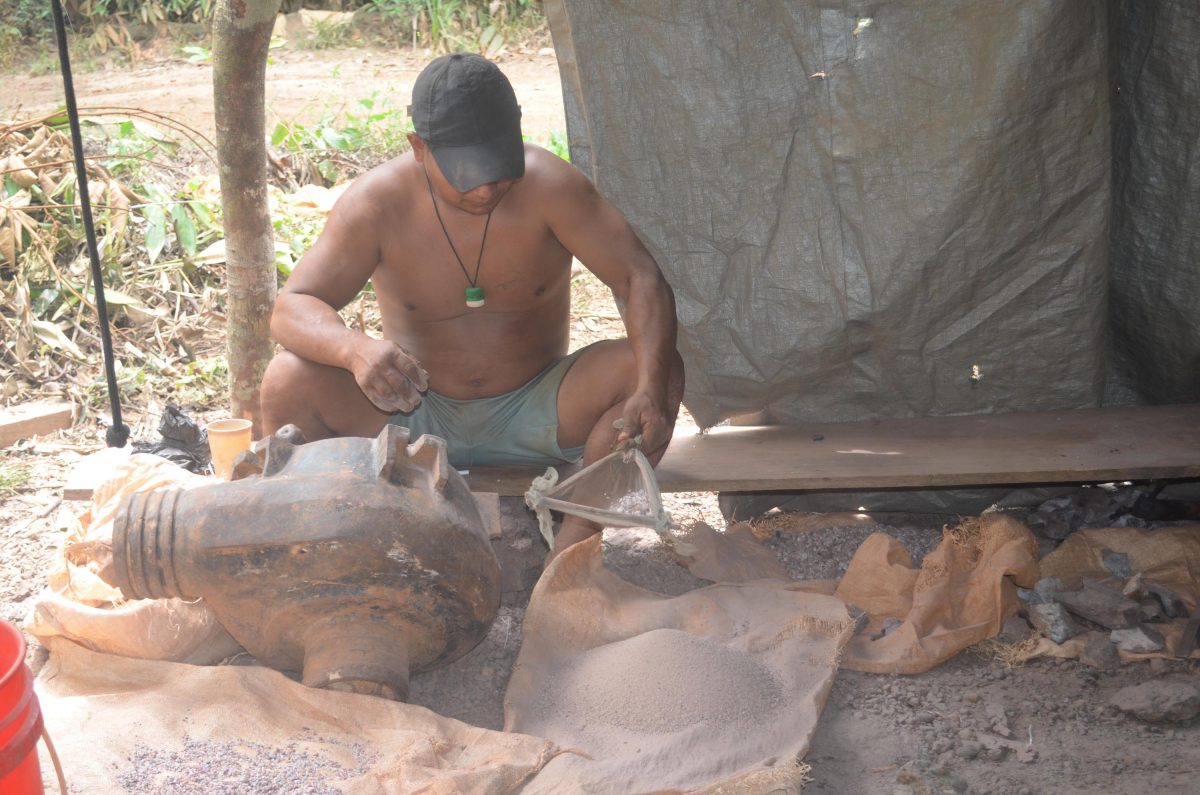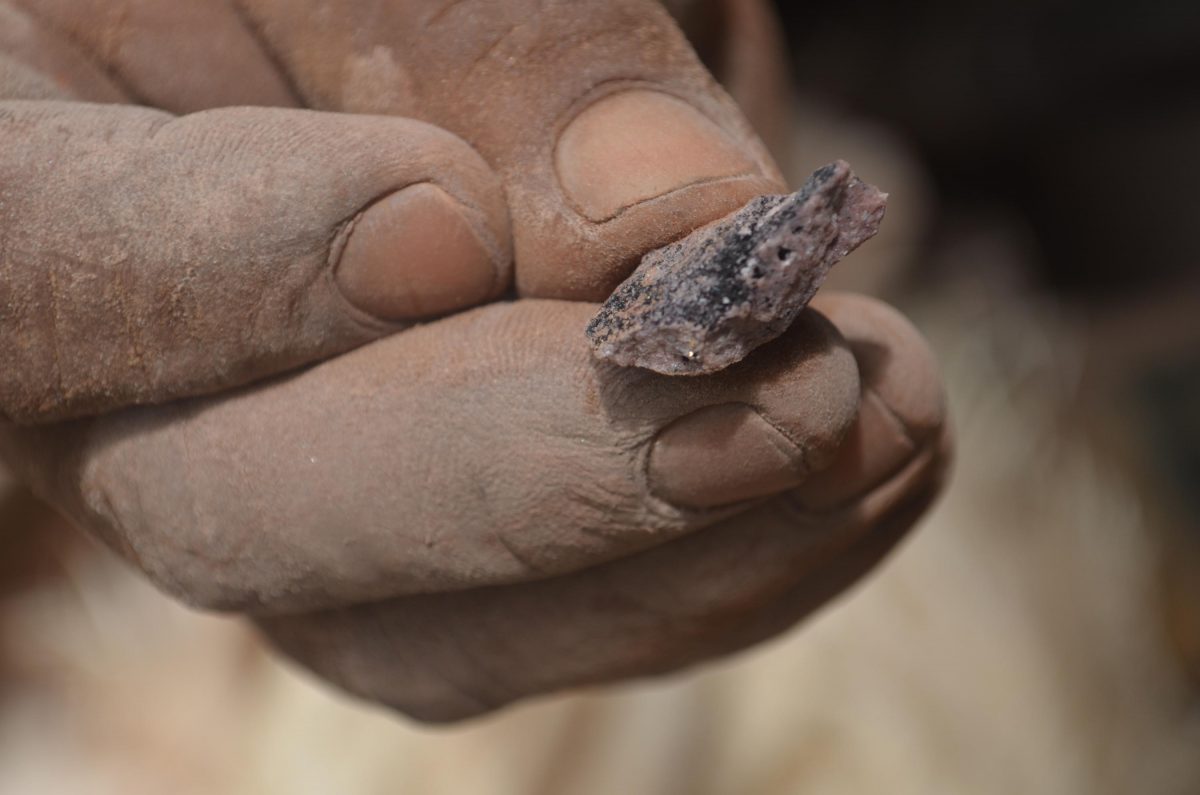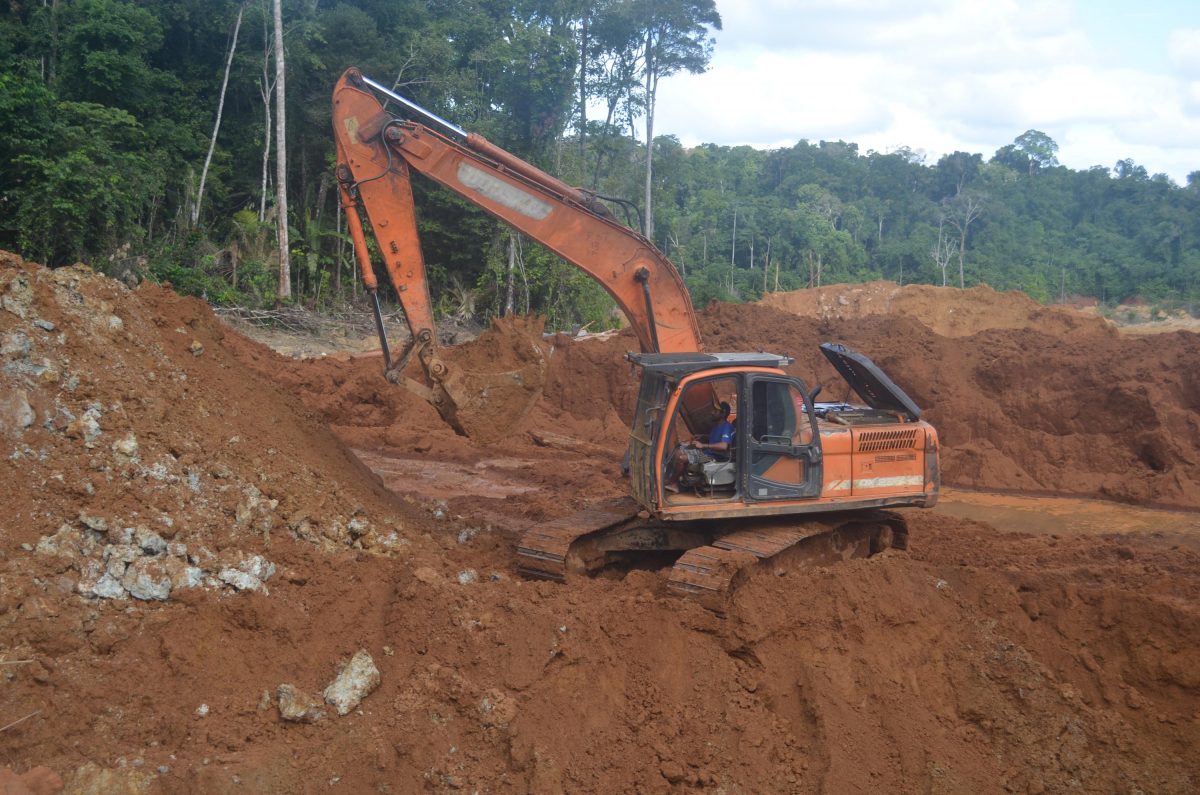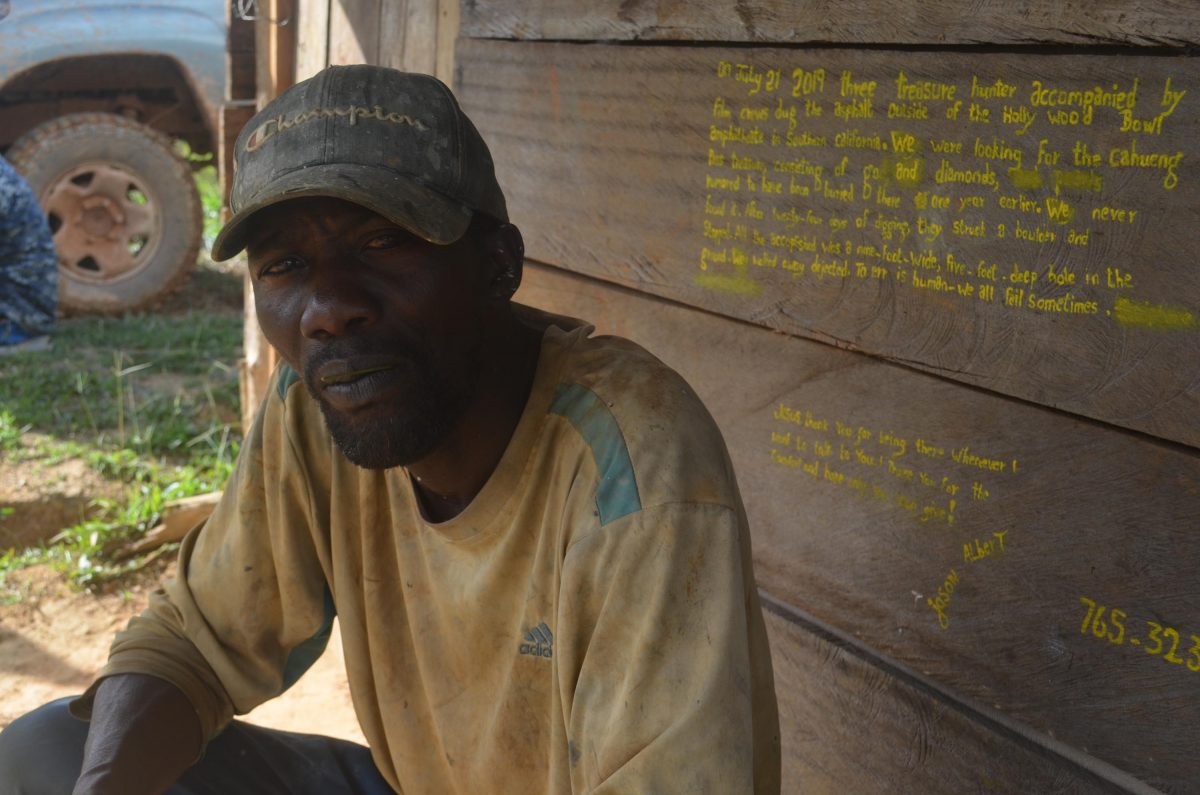Once bustling with bars, snackettes and miners, the landing which serves as the core of the gold mining community in the Marudi Mountains in the Rupununi has become eerily desolate – a ghost town filled with nothing but empty shacks and a handful of persons as a years-long stalemate between prospectors and the regulatory authorities continues.
Minister of Natural Resources Vickram Bharrat in a brief comment said that the Guyana Geology and Mines Commission (GGMC) halted mining activities so that fresh consultations could be held between Guyana Goldstrike Inc, formerly known as Romanex Guyana Exploration Ltd (which holds an 18-year mining licence on its 13,500 hectares Marudi gold project) and the Rupununi Miners Association (RMA), small miners, and the South Rupununi District Council (SRDC) – an Indigenous Rights group in Region Nine.
Miners who remain in the area has said that the GGMC has increased its monitoring activities and has halted the majority of gold mining activities in the Marudi Mountains, which are located in Region Nine in southwest of Guyana.
They added that they can only speculate as to what the reason may be as they were not given an explanation why their mining equipment, some licensed, was seized.
“This backdam has had this problem here since I came. Company come [and] company go; there were a lot of cease orders and it was only in January 2016 we were called to a meeting at the convention centre [the Arthur Chung Conference Centre in Georgetown] when [former President David] Granger wanted to regularise small miners. On that basis they came and told us in Marudi that the problem will be solved permanently,” said Premchand Paul, the Secretary of the RMA, and a small-scale miner who has been living in Marudi for the past 32 years.
Taking into consideration that artisanal and small-scale mining has been an ongoing activity in the Marudi area long before the GGMC granted large-scale mining companies concessions in the area, “the problem” originated when members of the RMA started demanding that they be allowed to continue their gold mining operation on the concession now-owned by Guyana Goldstrike. The SRDC thereafter voiced their concerns about the environmental, social and health impacts that large-scale mining operations might have on neighbouring indigenous communities.
Numerous attempts have been made to have this issue resolved over the years but to date none has proven successful. In April 2016, former Minister of Natural Resources Raphael Trotman intervened in a standoff between small miners from the Marudi Mountain area, representatives of the SRDC and Guyana Goldstrike (still referred to as Romanex by miners). Trotman facilitated a historic mediation process with the help of Major-General (Rtd) Joe Singh. The “successful” mediation resulted in all parties signing the ‘Mediation of the Marudi Mountain Dispute Agreement’ which would guide future engagements to finalise a solution.
Commissioner of the GGMC, Newell Dennison said that after Romanex’s mining licence was suspended, miners from Brazil and other parts of the country took the opportunity to conduct gold mining operations in the area. Word of their illicit activities reached the regulatory body and GGMC was forced to go into the area to suspend all activities. He noted that the illegal mining in the area also forced them to fast-track processes with a new investor company – Guyana Goldstrike Inc, who bought over Romanex. The mining licence was reclaimed and the company indicated that they would like to re-activate gold mining on the concession which led to a signing of a Memorandum of Understanding (MoU).
However, before mining activities and exploration could continue, an Environmental and Social Impact Assessment (ESIA) by the Environmental Protection Agency (EPA) would have had to be conducted. By that time a group of miners who had interest in Marudi formed the RMA and contested Romanex’s rights to the land. According to Dennison, this caused quite a controversy and Trotman proposed a discussion between the rival groups in an attempt to resolve the issue.
“All kinds of things were being done to appease the small miners so that they can somehow be brought under the umbrella of the mining licence …,” Dennison said before disclosing that GGMC even built facilities at the area allotted for the Landing.
He said, “We ended up building facilities there and we had never done before on a landing to try and deal with that. It didn’t really work so it reached a point where nothing can happen.” He added that the activities in the tunnels in the Mazoa mountain was a disaster waiting to happen and so in the interest of safety, GGMC conducted enforcements of mining regulations. Unfortunately, a strong and more permanent presence was not possible so when GGMC ranks left, the miners would return.
Three persons
Earlier this year, he said, he and Minister Bharrat visited the area and it was discovered that there were three persons claiming to be the President of the RMA. Bharrat stated that he would not be dealing with the “Presidents” and would only consult the people who are interested in mining and finding a solution to the issue at hand. Meanwhile, the licence owners indicated their willingness to negotiate and have held several consultations with the Government.
In the meantime, Dennison said, GGMC has been carrying out its mandate which is ensuring that no illegal mining is occurring in the area. “Based on the last reports that I have received I have been assured that there aren’t any substantial miners in there but we are trying to maintain a no-go zone until a solution has been agreed to between the mining associations and the property owners.
As part of the agreement, according to Paul, artisanal and small-scale miners were allowed to mine on the concession under several conditions until the company starts operations after which they will become employees of the company. It was agreed upon by the three parties involved that an Environmental and Social Impact Assessment (ESIA) must be done before operations restart.
Paul recalled that not long after the agreement was signed, some of the recommendations were implemented.
This statement was disputed by Bharrat who proffered that while there were several recommendations in the agreement that were supposed to be implemented, this was never done; hence the preparation for fresh consultation with the parties involved.
“We have been doing that [halting mining activities] to find a workable solution to restart mining. We are closing in on a solution but any solution must be accepted by all parties involved and so once all the parties are satisfied and (the) EPA on the environmental issues gives the go-ahead, we will restart mining operations,” the minister said.
He also disclosed that the mediation agreement is currently under review and depending on the outcome of the consultations there will be changes to the document. Bharrat added that he is unsure when mining activities will be restarted.
Meanwhile, Paul said that the conditions of the agreement were miscommunicated to the small-scale miners who were led to believe that parts of the concession were given to them and who have refused to comply with the terms of the agreement.
He explained that the miscommunication created even bigger problems as medium-scale miners made their way to Marudi believing that there was a go-ahead with mining operations in the area. Shops and brothels in the area popped up everywhere and Marudi Landing was called Sheriff Street because of its hustle and bustle. He noted that some 70 miners were given permission to operate in Guyana Goldstrike’s concession but all were small-scale miners.
In addressing the issue, Paul said that the company adopted a policy whereby contracts were issued to small-miners who wanted to work on the concession as long as they complied with certain conditions.
For many miners it seems as though politics has played a role in the situation they are in today. “Promises… that is all we hear. One said that they will restart mining operations in eight days. It’s almost two months and we can’t start mining,” one miner complained.
Site and Operations Manager at Guyana Goldstrike, Napoleon McKenzie, nonetheless explained that the mediation agreement, which is still to be finalised, has changed the company’s entire work plan as they have to now consider incorporating small miners into their employ.
Additionally, McKenzie related that while miners were given the opportunity to mine on the lands, they were not permitted by the GGMC to utilise crushers and other equipment to extract gold from ore collected.
“These crushers are things they operate on their own. Many of the small miners have changed their methods of extracting gold over the years and they brought in crushers and excavators and so but we never collected any royalty or anything we were not attached to,” he pointed out.
He added that the entire dispute between miners and GGMC is as a result of not having adequate representation.
“The small miners are here working and they have elected officials to represent their views but nobody has been doing anything for them. It is hard for them to take time off and go into Georgetown every time,” he pointed out.
Trap the mercury
“We can only monitor our concession, beyond that we have no say. From time to time we would have checked and ensured they have tailings ponds to trap the mercury but out of the concession you had other miners acting carefree,” McKenzie explained when asked if his company conducts any monitoring of activities.
A miner, who preferred not to be named said that he was issued a contract by the company and as such was working on the claim but then an official from the GGMC stopped everyone from mining, explaining that the contract that was issued by the company is no longer valid hence any operations on the concession will be considered illegal. However, when questioned why the contract was no longer valid, the GGMC official refused to provide any answers and instead handed him a court summons while informing him that he would be charged as he has received no permission to work.
He lamented that the stopping of mining activities is having a serious impact on not only miners but surrounding communities as well. He noted that he usually has about 16 persons working with him but due to the halt in mining activities only a few have remained to see how much gold they can find manually.
As a dredge owner, he added, he knows that many people benefit directly and indirectly from mining in the area as many from surrounding communities usually travel to Marudi to sell meat and other produce to small miners. He noted that now that mining has stopped, it will be difficult for many to sustain themselves.
“If persons are not working then they cannot buy food because they don’t have the finances to maintain their activities and family. Right now I don’t have workers and people from these villages depend indirectly and directly on these and some people bring beef, farine, fruits and vegetables to sell,” he informed.
He added that there might not be much gold in the area anymore but the amount that is found is enough to sustain many. “We ain’t get no jobs, this is where we living and maintaining our families from here and we depend on this.”
The remaining small-scale miners voiced similar concerns and with little hope left, some have said that they will be leaving the area because it’s no longer feasible to stay.
Another small-scale miner, Aubrey Phoenix, noted that there is much conflicting information regarding permission to work on Guyana Goldstrike’s concession and at one point they were told that they had to pay ten percent of their findings to the company.
A representative from the company when asked denied that miners were ever told to pay a ten per cent royalty.
He added that GGMC wants all miners to exit Marudi, but this is impossible for some as they are financially unable to do so. “If you ain’t get money, how you gon move?” he queried.
On Mazao Mountain, GGMC has blocked the road leading up the mountain but people were still working in its numerous tunnels. Bags of rocks to be crushed were left abandoned atop the mountain as miners await a solution.
With limited options for sources of income, artisanal and small-scale miners who ply their trade in Marudi are hoping that the issues with the agreement will soon be resolved. However, as the miners have stated, they are not the only who are feeling the impacts.
Mining for Survival
Twenty minutes away from the foot of the Marudi Mountains, a group of Indigenous males stood under a structure made with wooden sticks and a plastic sheet forming a cover. Here they camp during their mining stint. While a few crush the raw material collected from the mountain, others prepare lunch for the day.
This group of miners are not equipped with large machinery or jet pumps, their collection of ore is done manually.
“We collect this material from the mountain – a bag or two – it is everybody for themself, and then we pound it finer and then process it with mercury to extract the gold. This is how it was done years ago before they had crushers but we don’t have crushers and it is too costly for us to use the crushers so we remain in the traditional way,” Andrew [only name given] explained.
Acknowledging that the process is difficult and strenuous, he stated that they have to do it for survival.
Back at the foot of the mountain, at least three generators kick into operation powering small jet pumps a day after the GGMC officer conducted a sweep and removed illegal miners. These miners were able to elude the GGMC officers.
Phoenix stated that many miners do not mind paying the ten per cent if need be, because they are dependent on mining activities to sustain not only themselves but their families as well.
“It is very hard, we can’t even eat the things we want because we have no finances. The state of operations is in survival mode. I sold my gold here because with all the big fight down is not a big percent of gold we get and it’s just a small amount so what we get is to buy fuel, food and dredge parts,” he said.
“You see what I am doing here is to get my next meal and for my family out there [on the coast] to get their next meal. This isn’t about getting rich, it is about survival all the way,” a miner named Tony who was guiding the jet hose through the dirt at the foot of the mountain explained.
His story was echoed by almost all of the miners who remained in the area. A majority of the miners are utilising the trade as a means of sustaining their families due to limited job and educational opportunities. And while some small-scale miners in the industry are paid based on their production, artisanal miners are forced to fend for themselves.
But since the complete halt of mining activities, many villagers from communities surrounding the Marudi Mining area, have told the Stabroek News that they are also feeling the impacts of the stoppage.
